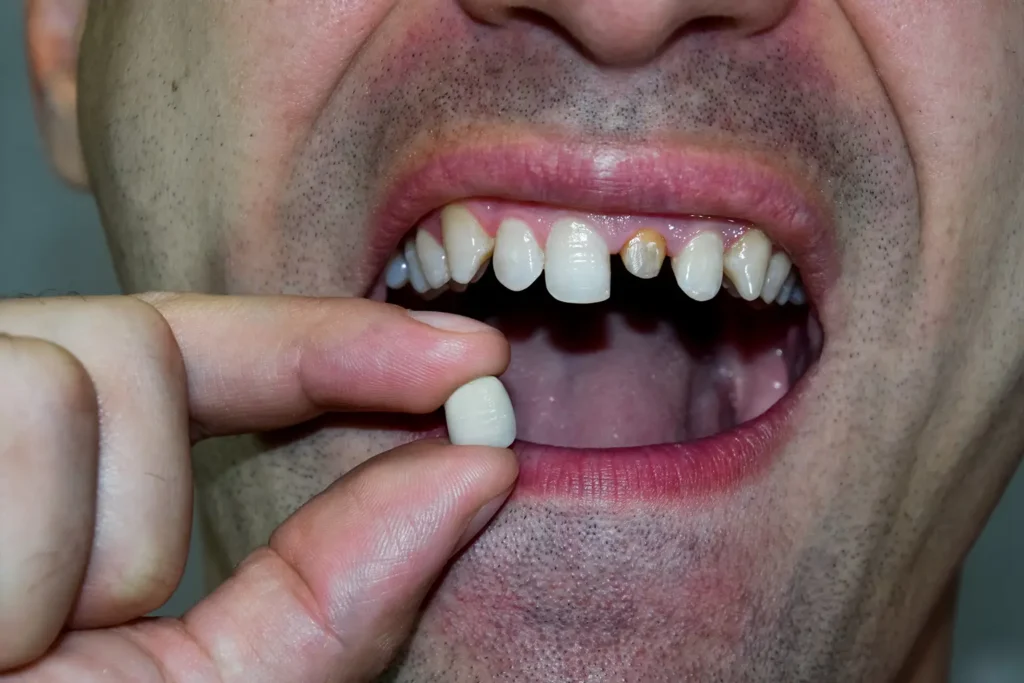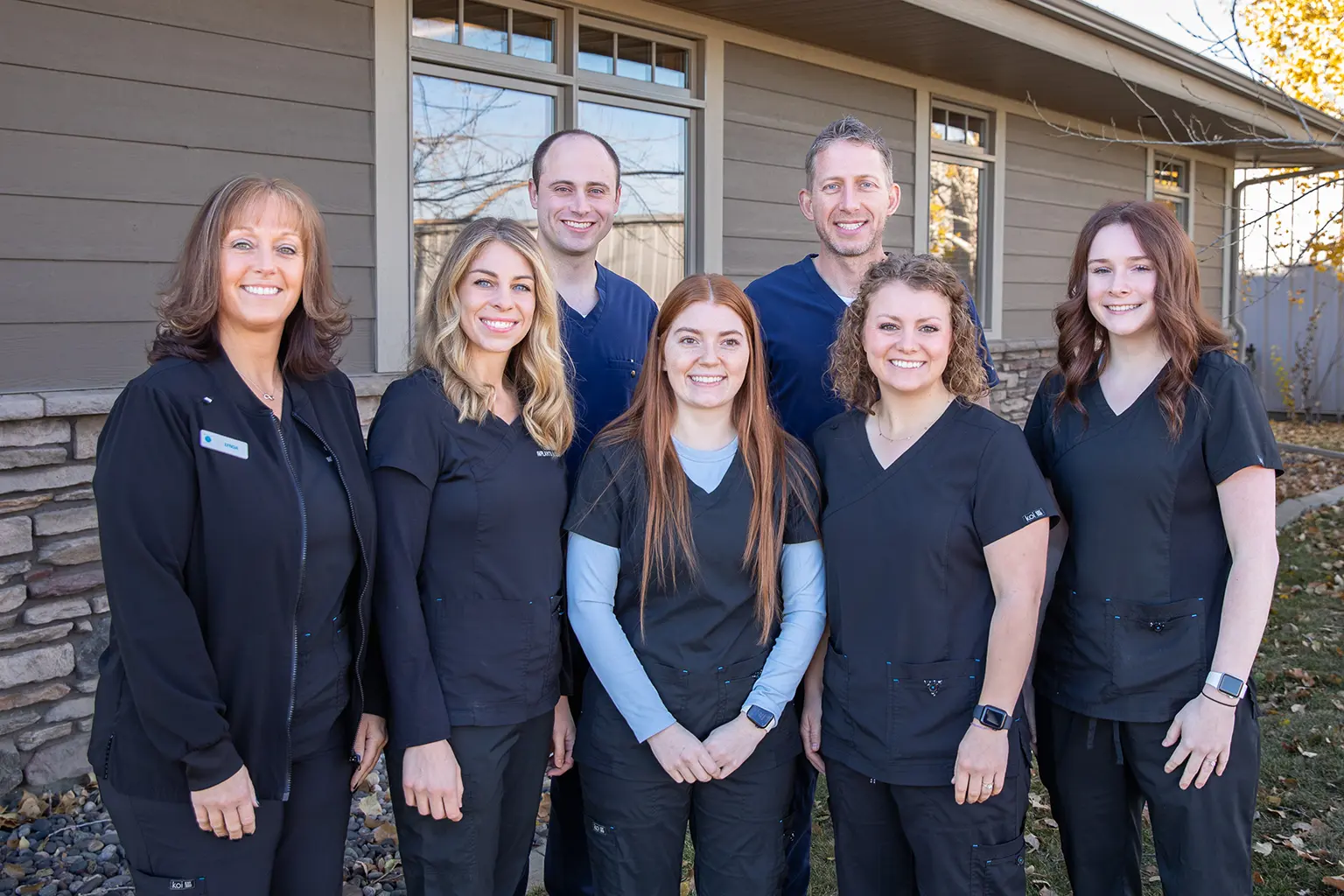Table of Contents
Whole mouth rehabilitation, also known as full mouth reconstruction or restoration, is a comprehensive dental treatment plan designed to address complex dental issues that affect the entire mouth. This procedure involves the restoration of all the teeth in both the upper and lower jaws. It’s a tailored approach that combines multiple dental treatments to not only improve the aesthetics of your smile but also restore the functionality and health of your teeth and gums. At Montana Center for Implants and Dentures, we specialize in whole mouth rehabilitation, offering patients a chance to regain their oral health and confidence.
What is Whole Mouth Rehabilitation?
Whole mouth rehabilitation is an all-encompassing dental treatment plan that aims to rebuild or replace all of the teeth in a patient’s mouth. This procedure is necessary when multiple oral health issues are present, such as widespread tooth decay, gum disease, oral damage due to trauma, or significant wear and tear on the teeth. The goal of whole mouth rehabilitation is to create a balanced, functional, and aesthetically pleasing smile.
Key Components of Whole Mouth Rehabilitation:
Comprehensive Assessment
- The process begins with a thorough examination of your mouth, including teeth, gums, jaw, and overall oral health. This assessment helps identify all areas of concern, including tooth decay, oral damage, bite issues, and aesthetic needs.
Customized Treatment Plan
- Based on the assessment, a personalized treatment plan is developed. This plan may include a combination of restorative procedures such as crowns, bridges, dental implants, veneers, and gum treatments. The treatment is tailored to meet the specific needs of the patient, ensuring that all aspects of their oral health are addressed.
Restorative Procedures
- The treatment plan often involves multiple restorative procedures to fix damaged or decayed teeth. This can include fillings, crowns, bridges, and dental implants. Dental implants are particularly effective in replacing missing teeth and providing a strong foundation for prosthetic teeth.
Periodontal Care
- Gum health is crucial to the success of whole mouth rehabilitation. Treatments may include scaling and root planing, gum grafting, or other periodontal procedures to ensure the gums are healthy and can support the restored teeth.
Orthodontic Treatment
- In some cases, orthodontic treatments such as braces or clear aligners may be necessary to correct bite issues or misaligned teeth before proceeding with restorative procedures.
Cosmetic Enhancements
- Aesthetic improvements are also a key component of whole mouth rehabilitation. This may involve teeth whitening, veneers, or bonding to enhance the overall appearance of your smile.
Ongoing Maintenance
- After the rehabilitation process is complete, ongoing dental care and maintenance are essential to preserving the results. Regular dental check-ups, cleanings, and good oral hygiene practices are vital to ensuring the long-term success of the treatment.

Who Might Be a Candidate for Whole Mouth Rehabilitation?
Whole mouth rehabilitation is ideal for patients who have extensive dental problems that affect their entire mouth. Here are some scenarios where a patient might be a good candidate for this treatment:
Severe Tooth Decay and Damage
- Patients with widespread tooth decay, fractured or damaged teeth, or those who have experienced significant wear and tear on their teeth due to grinding (bruxism) or other factors may benefit from whole mouth rehabilitation. This treatment addresses all the damaged areas to restore full function and appearance.
Multiple Missing Teeth
- Individuals who have lost several teeth due to decay, injury, or gum disease may require a comprehensive approach to restore their smile. Dental implants, bridges, and dentures can be used in combination to replace missing teeth and improve oral function.
Gum Disease and Periodontal Issues
- Gum disease can lead to tooth loss and other serious oral health problems. Patients with advanced periodontal disease may need a combination of gum treatments and restorative procedures to rebuild their smile and prevent further damage.
Bite Alignment Issues
- A misaligned bite (malocclusion) can cause significant oral damage over time, including tooth wear, jaw pain, and even temporomandibular joint (TMJ) disorders. Whole mouth rehabilitation can address these issues by realigning the bite and restoring damaged teeth.
Trauma and Oral Injury
- Accidents or injuries that result in significant oral damage may require a full mouth restoration. This treatment can repair and replace damaged teeth, ensuring that both function and aesthetics are restored.
Aesthetic Concerns
- Some patients seek whole mouth rehabilitation primarily for cosmetic reasons. Whether due to discolored, misshapen, or misaligned teeth, this treatment can provide a complete smile makeover that enhances both appearance and confidence.
Comprehensive Oral Health Decline
- Individuals who have neglected their oral health for an extended period may suffer from multiple issues, including decay, gum disease, and tooth loss. Whole mouth rehabilitation offers a fresh start by addressing all these problems in a coordinated treatment plan.

The Benefits of Whole Mouth Rehabilitation
Whole mouth rehabilitation offers numerous benefits, both functional and aesthetic. Here’s how this comprehensive approach can make a difference:
Improved Oral Function
- Restoring damaged or missing teeth improves your ability to chew, speak, and enjoy a variety of foods. This not only enhances your quality of life but also supports better overall health and nutrition.
Enhanced Aesthetic Appeal
- A full mouth restoration can dramatically improve the appearance of your smile. By addressing issues like discolored, crooked, or missing teeth, this treatment gives you a more attractive, confident smile.
Long-Term Oral Health
- By addressing all areas of concern in your mouth, whole mouth rehabilitation helps prevent future dental problems. This proactive approach can save you time, money, and discomfort in the long run.
Boosted Self-Confidence
- A healthy, beautiful smile can significantly boost your self-esteem. Whether at work, in social situations, or in your personal life, feeling confident about your smile can have a positive impact on your overall well-being.
Comprehensive Solution
- Whole mouth rehabilitation provides a complete solution to complex dental issues. Rather than addressing problems piecemeal, this treatment plan considers your entire oral health, ensuring that all issues are resolved in a coordinated manner.
Tailored Treatment
- Every whole mouth rehabilitation plan is customized to the patient’s unique needs. This ensures that you receive the exact care required to achieve optimal results, whether you need dental implants, crowns, bridges, or periodontal treatments.
How Can I Fix My Teeth? The Role of Whole Mouth Rehabilitation
If you find yourself dealing with multiple dental issues, whole mouth rehabilitation might be the answer you’re looking for. This treatment is designed to address complex cases where simple fixes are not sufficient. Whether you’re struggling with tooth decay, oral damage, gum disease, or missing teeth, whole mouth rehabilitation provides a comprehensive solution that restores both function and aesthetics.
At Montana Center for Implants and Dentures, we specialize in whole mouth rehabilitation, offering our patients personalized care and state-of-the-art treatments. Dr. Josh Muir and Tanner Townsend work closely with each patient to develop a treatment plan that meets their specific needs, ensuring that every aspect of their oral health is addressed.
The Process
The journey to a restored smile with whole mouth rehabilitation involves several key steps:
Initial Consultation
- Your journey begins with a comprehensive consultation at Montana Center for Implants and Dentures. During this visit, Dr. Josh Muir and Dr. Tanner Townsend will evaluate your oral health, discuss your goals, and determine if whole mouth rehabilitation is the right option for you.
Diagnostic Phase
- This phase involves a detailed examination of your teeth, gums, jaw, and bite. X-rays, 3D imaging, and other diagnostic tools may be used to create a complete picture of your oral health. This information is critical in developing an effective treatment plan.
Treatment Planning
- Based on the diagnostic results, a customized treatment plan is developed. This plan outlines the procedures needed, the timeline for treatment, and any preparatory steps required, such as periodontal therapy or orthodontics.
Treatment Execution
- The treatment phase involves performing the necessary procedures, which may include dental implants, crowns, bridges, veneers, or gum treatments. The sequence and timing of these procedures are carefully coordinated to achieve the best results.
Recovery and Maintenance
- After the treatment is complete, a recovery period is necessary, especially if surgical procedures like dental implants are involved. Following recovery, ongoing maintenance, including regular dental check-ups and cleanings, is essential to preserving the results.
Conclusion
Whole mouth rehabilitation is a life-changing treatment that offers a comprehensive solution to complex dental issues. Whether you’re dealing with severe tooth decay, oral damage, gum disease, or multiple missing teeth, this treatment can restore your smile’s health, function, and appearance.
At Montana Center for Implants and Dentures, we are dedicated to providing our patients with the highest quality care. Our experienced team is here to guide you through every step of the process. Contact us today to schedule your consultation and take the first step toward a healthier, more confident smile.





